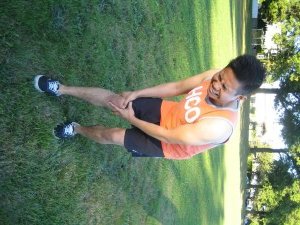The knee pain that an individual experiences after kicking a ball has various causes which are all due to overuse or strain in the knee muscles. Whether one plays soccer as a sport or recreational activity, the repetitive movements involved such as from running and kicking can damage the tendons and muscles in the knee.
It is vital that you understand the possible causes of the knee pain so that the proper steps can be taken to manage the pain as well as make the necessary adjustments on skills to avoid the discomfort in the future.
What are the possible causes?
Since the knee pain that arises after kicking a ball have various causes, it is best to consult a doctor if the individual experiences persistent or lingering issues. Remember that some of the causes of knee pain include an anterior cruciate tear which is linked to the abrupt changes in the direction of the joints.

The knee pain might also be linked to patellofemoral joint syndrome. This condition is characterized by inefficient gliding of the kneecap over the femur which results to pain and locking sensation.
Additionally, patellar tendinitis is known to affect soccer players who play frequently and suffer from pain due to continuous overuse of the knee joint.
Symptoms
Depending on the exact cause of the knee pain, an individual can experience it in various ways.
- If the knee pain is due to an ACL tear, there is a piercing or sharp pain when about the kick the ball and it does not subside until the knee is allowed to rest.
- If patellar tendinitis is the cause, there is a persistent throbbing or numbing sensation right beneath the patella.
- For patellofemoral joint syndrome, there is knee pain on either side of the knee that is accompanied by a locking sensation while extending the knee to kick.
Management of knee pain
In most circumstances, the ideal management for pain is the RICE method which stands for – rest, application of ice, compression and elevation. The pain can be drastically reduced by rest especially if it is due to a patellar tendinitis or an ACL tear. Remember that the tears and inflammation can be minimized and eventually heal by allowing the joint to rest.
If the individual continues his/her activities despite the pain, it can aggravate the symptoms or result to lasting damage. As for patellofemoral joint syndrome, it is managed with a combination of physical therapy and braces. Nevertheless, surgery might be required in some cases to minimize the degree of lateral pull on the joint.
Prevention
Always bear in mind that prevention is the best medicine. It is essential for the individual to practice his/her kicking technique to avoid any strain injuries. When kicking the ball, the knee must never snap. Instead of kicking using the toe, cushion the ball against the interior of the foot to protect the knee. While kicking, always keep the knee soft.
Make sure that the knees are given enough time to rest after a game or practice to avoid the development of repetitive injuries. Once pain starts to manifest, stop activity and consult a doctor so that proper treatment can be started to prevent it from getting worse.
